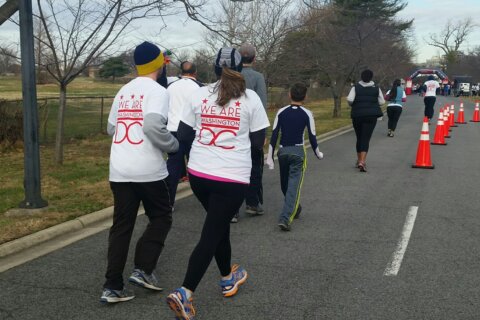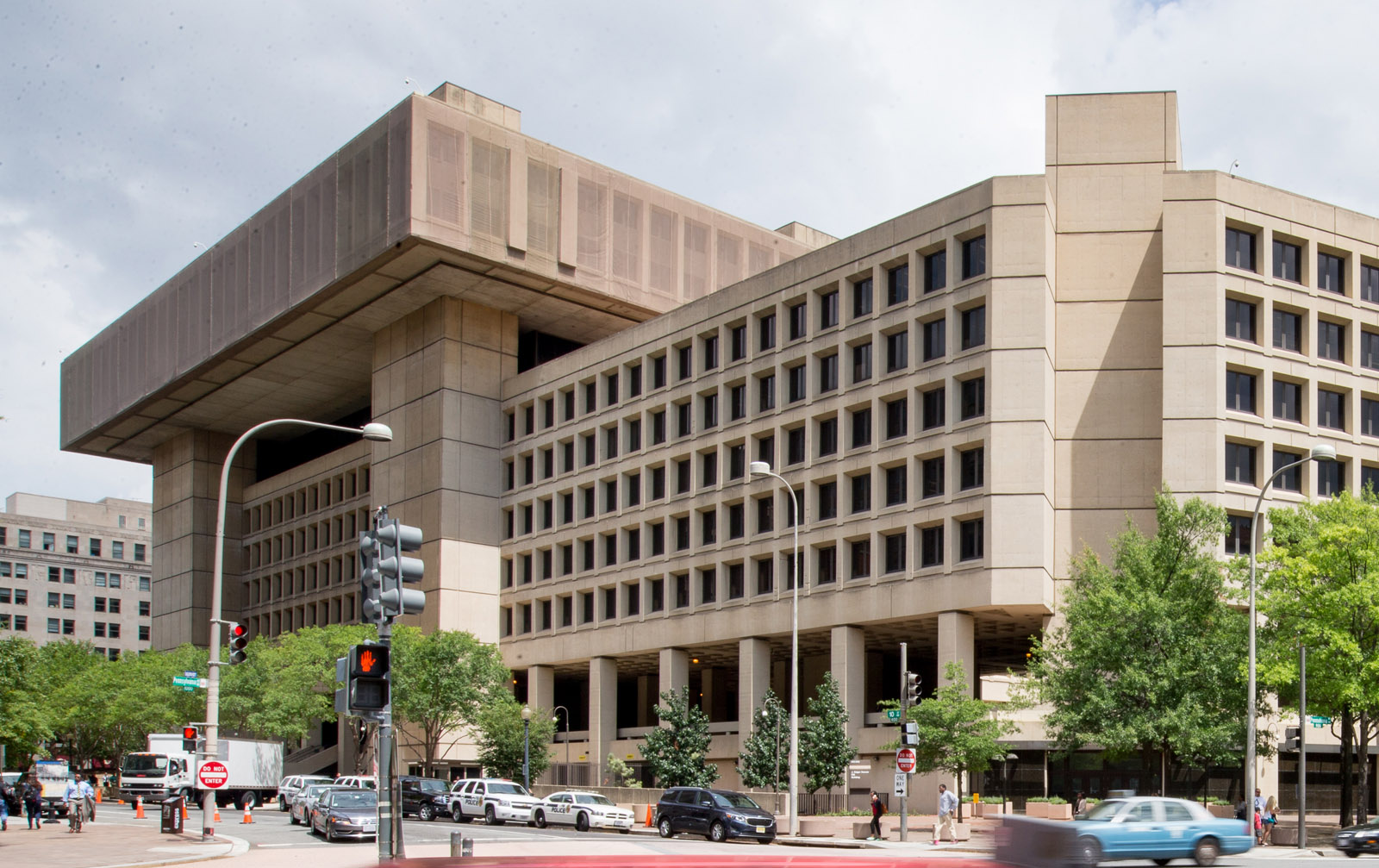WASHINGTON — Summer is underway, and if you’re looking for educational experiences for your kids during the break, there’s a treasure trove of low-cost options pretty close to home. They’re also great touring options for out-of-town guests.
The National Park Service and the National Park Foundation have teamed with U.S. Olympic gymnastics hero Dominique Dawes to encourage folks to learn about lesser-known Park Service monuments and sites.
Dawes, a member of the celebrated 1996 “Magnificent Seven” women’s team, recently toured three NPS locations as part of the “Find Your Park/Encuentra Tu Parque” campaign: The Martin Luther King, Jr. Memorial, Belmont-Paul Women’s Equality Monument, and The Frederick Douglass National Historic Site.
“I had been to the memorial many times before but yet did not know the history behind it other than, of course, the story of Martin Luther King,” Dawes said.
She gave plenty of props to Ranger John Kirkpatrick who conducted that morning’s tour.
“He gave more history of the development of the memorial. And I thought that was wonderful to hear his take on it and to hear his knowledge and his passion,” Dawes told WTOP.
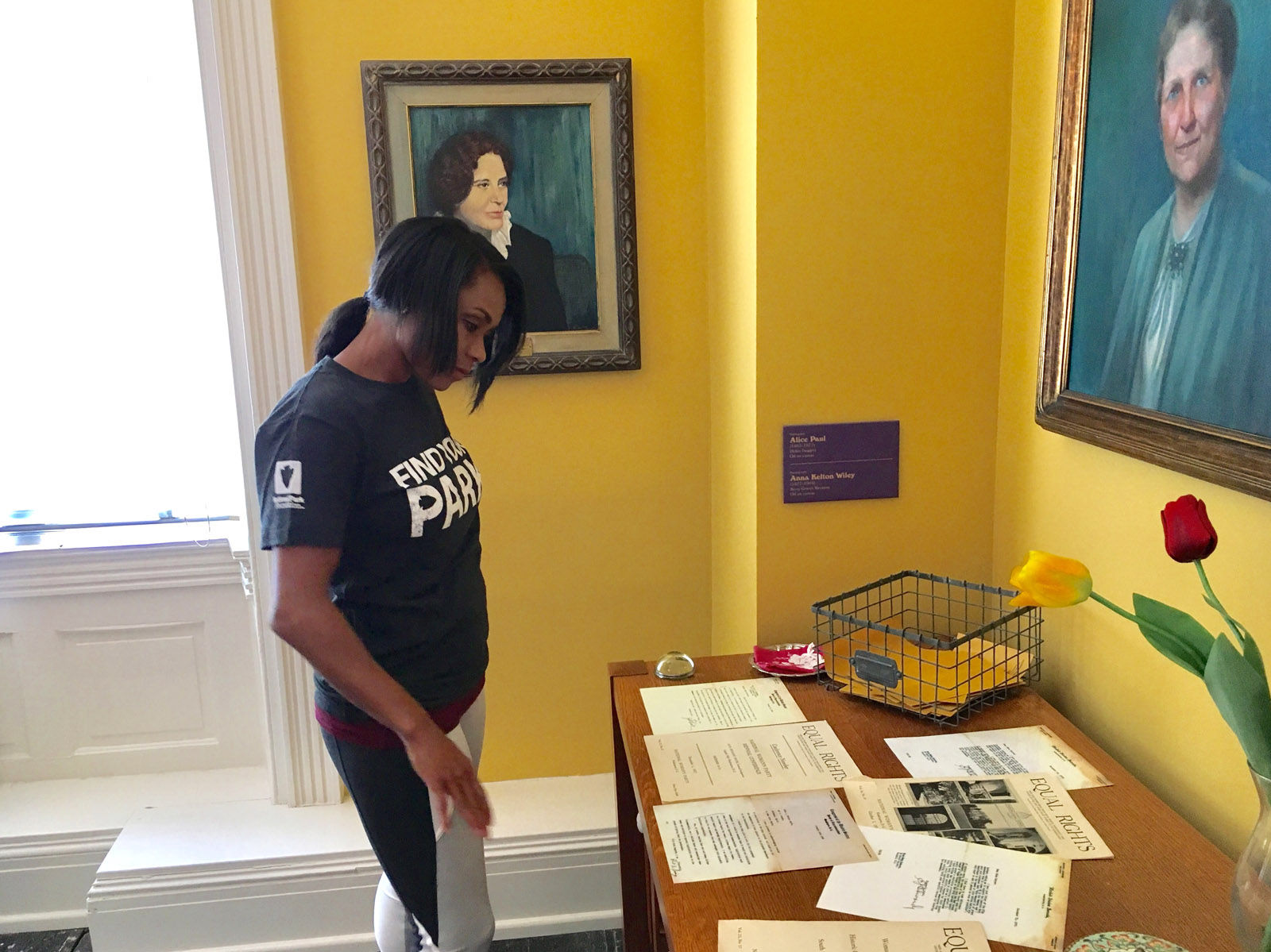
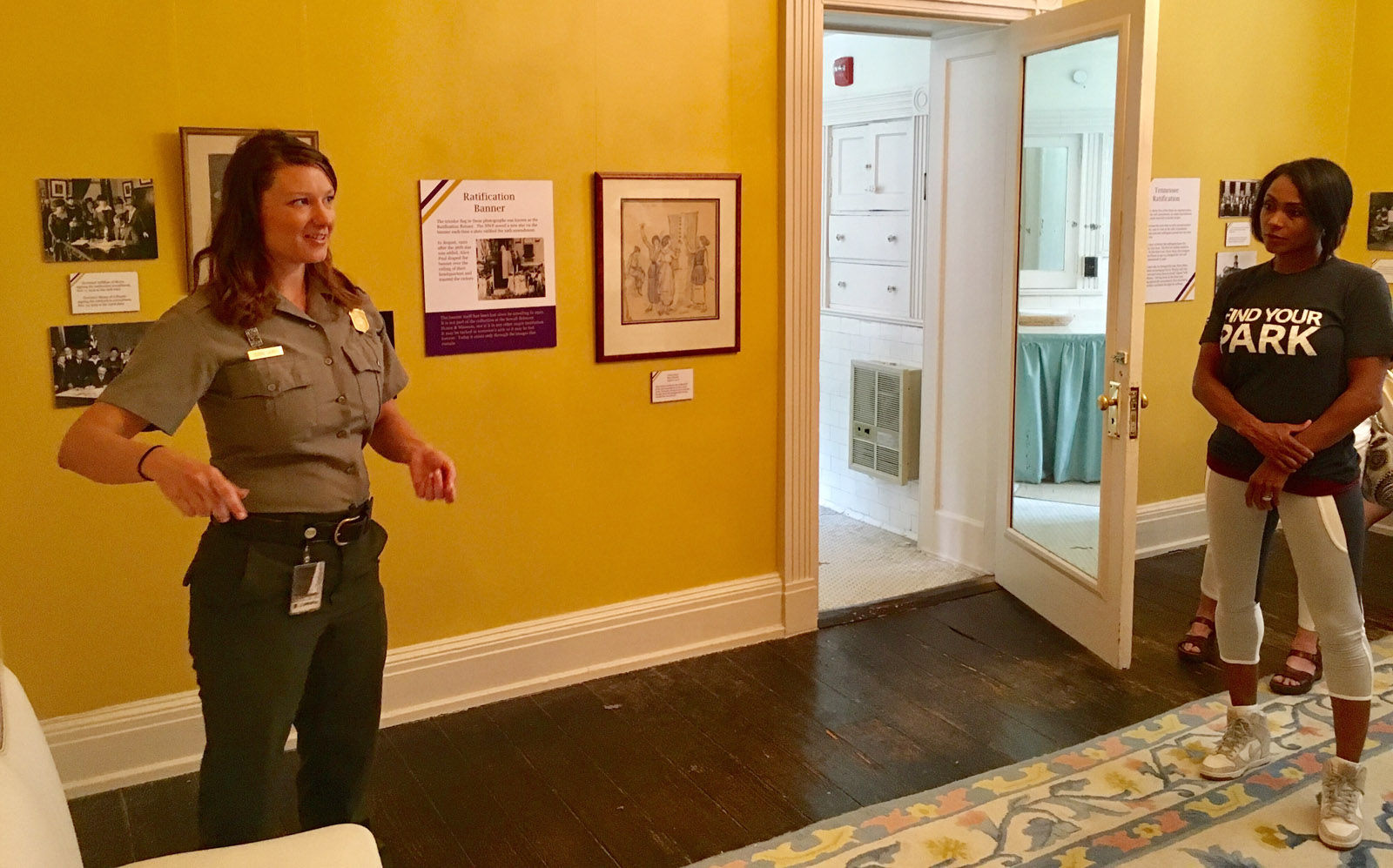
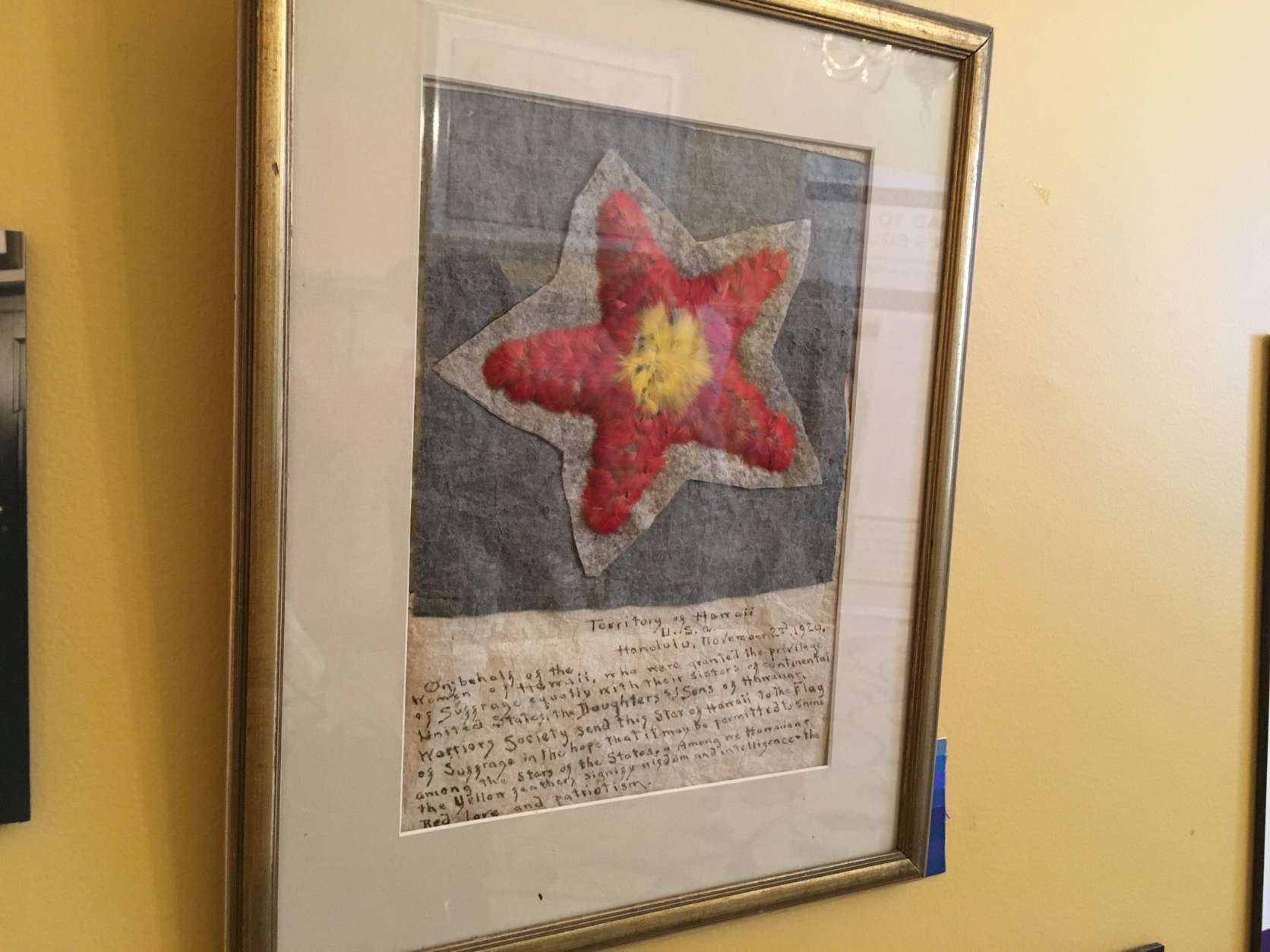
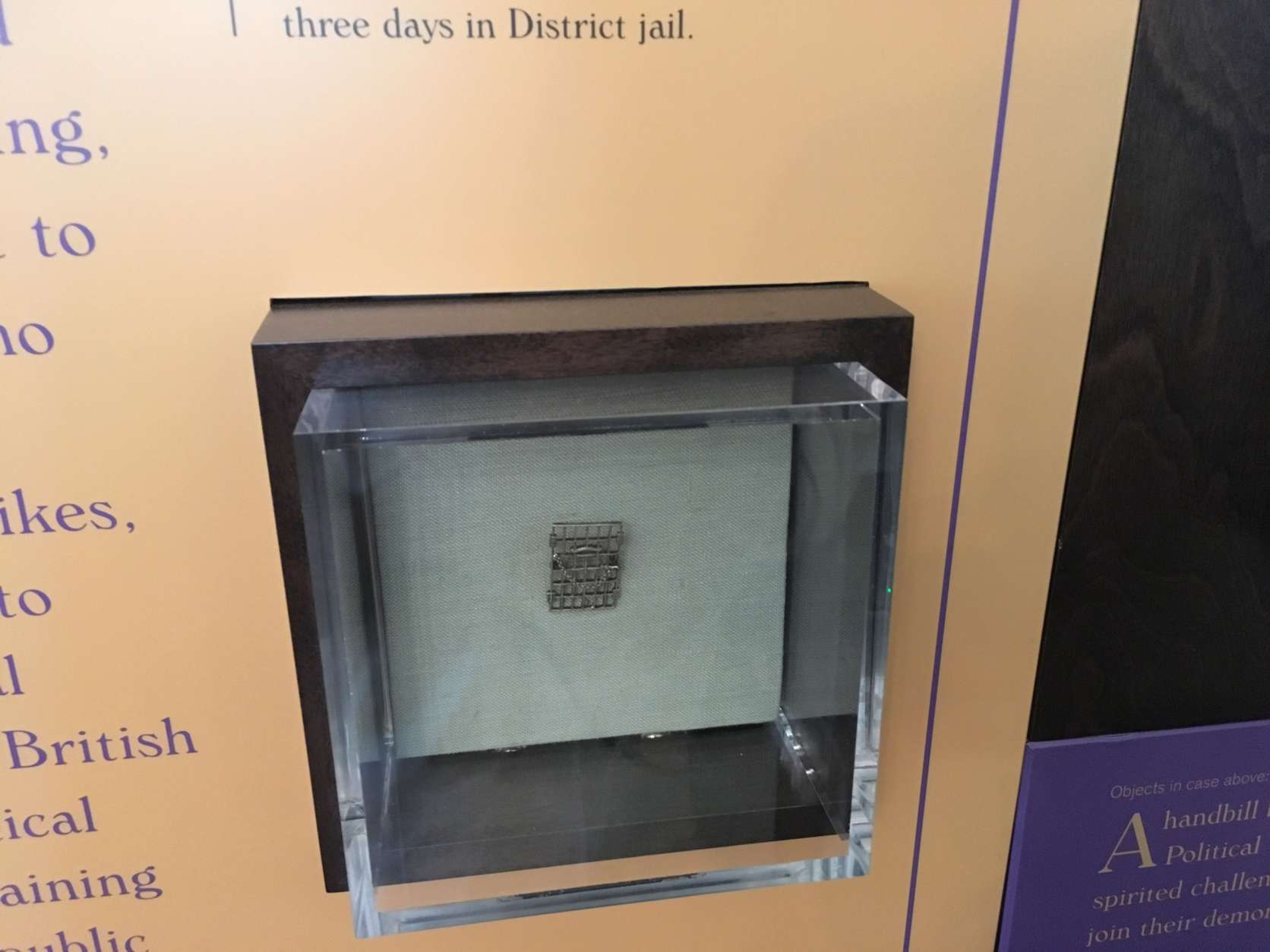

(WTOP/Liz Anderson)
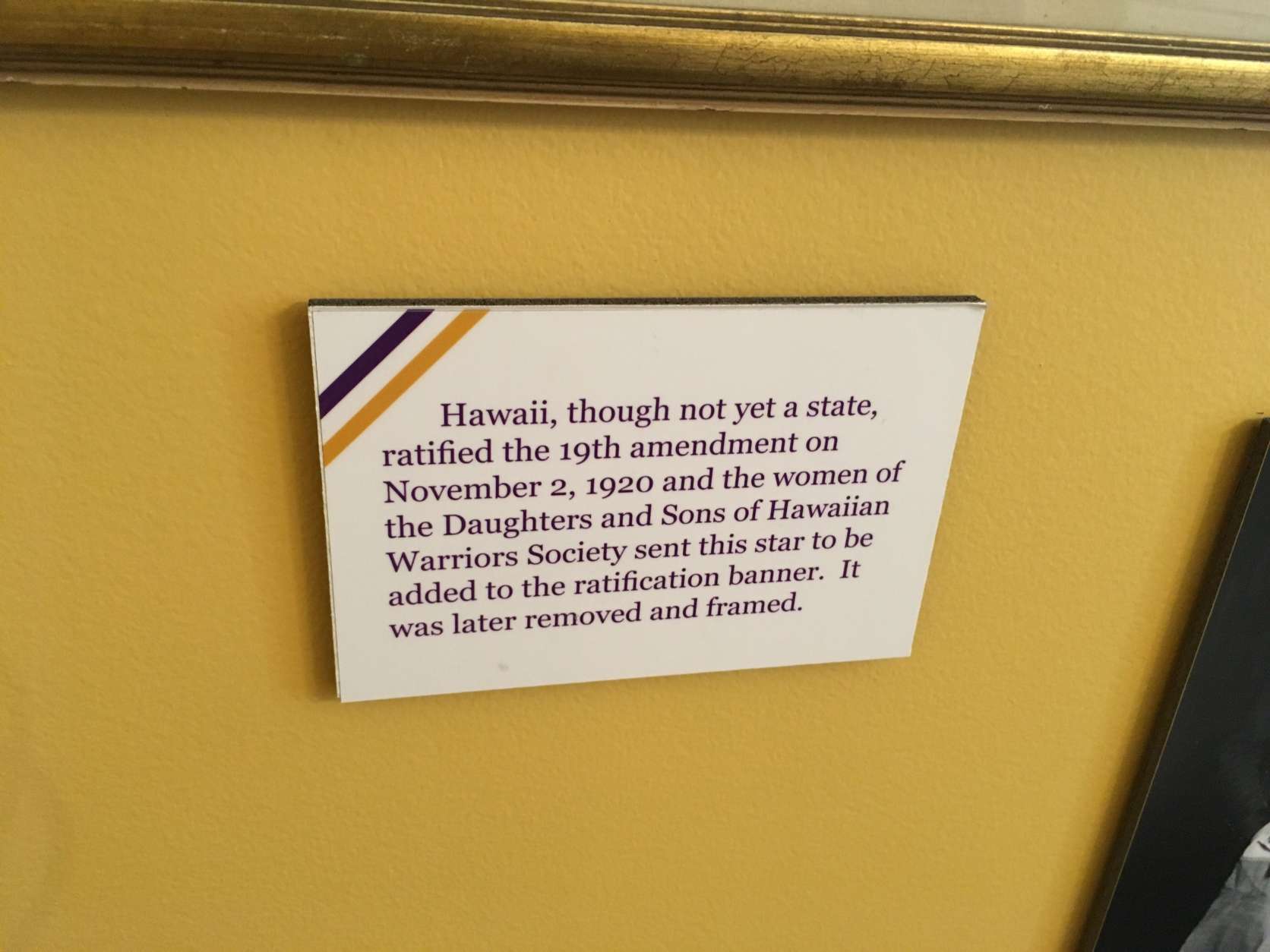
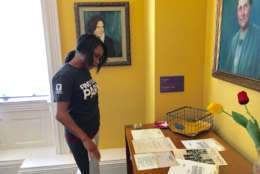
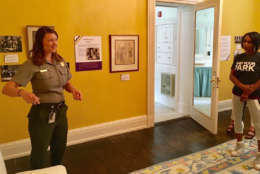
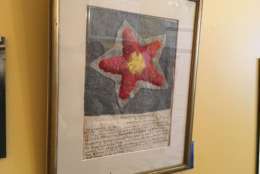
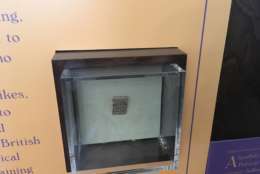
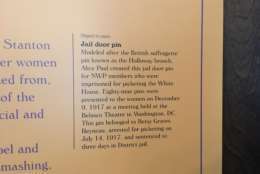
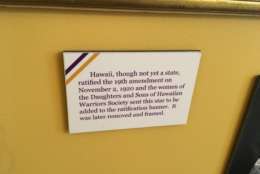
The second stop was Belmont-Paul, a two-story timeline of women’s suffrage located inside the headquarters of the National Women’s Party.
Ranger Loren Devore helped the exhibits and suffragette struggles spring to life with stories about several activists, including the monument’s namesakes Alva Belmont and Alice Paul. Artifacts on display include a commemorative jail door pin which is one of 89 pins given to NWP members who spent time in jail for picketing outside the White House.
Women’s suffrage and a mother’s influence
Who knew that the passage of the 19th Amendment hinged on a note from the concerned mother of a Tennessee state legislator?
In August of 1920, Harry Burn was 24 and the youngest member of Tennessee’s house. Burn cast the tie-breaking vote to ratify the 19th Amendment, which made the Volunteer State the 36th to ratify, and the final one necessary to give women the right to vote.
Burn was asked why he changed his vote to crack the 48-48 tie.
Turns out it was a note from his mother that encouraged him to vote in favor of women’s suffrage. She signed it “with lots of love, Mama.”
“These are important stories, but they also tell the stories of some of the challenges that we’ve faced as a nation. The parks tell the stories about the people, the places or the events that really define America and in the area of equality and justice,” says Will Shafroth, President and CEO of National Park Foundation. “This has been a struggle for our country, from the very beginning.”
“We are, frankly, a nation that’s a work in progress. We have made some progress, but we have a lot of work to do, and the Park Service sees its role in our nation, in part, to tell those important stories so we, as the citizens, can learn about our past, our history both to appreciate where we come from and where we’re heading but also to hopefully not repeat some of the mistakes that we’ve made as a country,” Shafroth added.
From slavery to a house on a hill
The final home of Frederick Douglass overlooks Washington from a perch above 14th and W Streets in the historic Anacostia neighborhood in Southeast, D.C.
Douglass lived at Cedar Hill with his first wife, Anna, who he was married to for nearly 44 years until she died of a stroke in 1882. His second wife, Helen Pitts, was a suffragette 20 years his junior. Pitts was also white, which not only made theirs a controversial union, but an illegal one in many states across the country.
“Although it was it was legal in Washington D.C., interracial marriage was not legal in Maryland or Virginia and pretty much anywhere in the South,” Park Ranger John McCaskill told Dawes’ tour group. “They could travel the world together; they just couldn’t travel the United States together.”
Douglass and Pitts married in 1884, which was 83 years before the landmark case Loving v. Virginia, in which the U.S. Supreme Court ruled unconstitutional any state laws banning interracial marriage.
An “Awesome Dawesome” mother’s influence
Dawes says she plans to take her daughters to these parks so they, too, hear these stories and see where history unfolded.
“I look forward to my young girls growing up so that I can as their mother, as their first teacher in life, share these amazing experiences so they can have a love for parks, they can have a love for our country, a love for our history and a knowledge of our history … and I know sharing with them and making these lasting memories will be ones that, hopefully, someday they pass down to their kids,” Dawes said.
She also says touring with a park ranger was a plus.
“I know whenever I have an opportunity to go visit a national park or a monument again, I’m going to, hopefully, try to get a ranger to give me a full tour,” she said.
Don’t worry if you don’t consider yourself to be an “outdoorsy” person. Dawes says she’s not either, and you don’t have to be in order to appreciate national parks. She and her husband have enjoyed several parks since they married four years ago.
“For our honeymoon, just take that amazing experience, we went to Crater Lake, we went to Multnomah Falls … to Redwood Forest. We jumped on a cruise ship to Alaska and went and visited Denali. Even for our baby moons, we went to national parks,” she said.
“That’s why I want to encourage many people to recognize the richness that they can get as a family, as a couple, as individuals at times at these national parks. They’re affordable, and you’re going to make some lasting memories, so I would encourage each and every person out there to Find Your Park.”
Ways to find your park
Whether you explore national parks in the D.C. Metro area or wander farther from home, the National Park Service and National Park Foundation have assembled comprehensive resources to help you Find Your Park, but we’ve included a few highlights here:
Martin Luther King, Jr. Memorial
Address: Enter this if using GPS — 1850 West Basin Drive SW, Washington, D.C. 20024.
Hours: 24 hours a day. Rangers available 9:30 a.m.-10 p.m.
Cost to enter: Free
Parking: Available, including along West Basin Drive and Ohio Drive, SW.
Nearest Metro station: Smithsonian along the Orange, Silver and Blue Lines. See all public transportation options on the memorial’s website.
Belmont-Paul Women’s Equality Monument
Address: 144 Constitution Avenue, NE; Washington D.C. 20002
Hours: Sunday, Wednesday, Thursday, Friday, Saturday 9 a.m.-5 p.m. Closed on Monday and Tuesday. Museum tours last one hour and start at 9:30 a.m., 11 a.m., 2 p.m., 3:30 p.m.
Cost: Free. Groups of 10 or more should schedule a visit by calling 202-543-2240.
Nearest Metro station: Orange, Blue and Silver Lines use Capitol South station. Red Line travelers should exit at Union Station. More details at on the memorial’s website.
Frederick Douglass National Historic Site
Address: 1411 W Street SE; Washington, D.C. 20020
Hours: Monday-Friday 9 a.m.-5 p.m. Closed Thanksgiving Day, Christmas Day, New Year’s Day.
April-October — 9 a.m.-5 p.m.
November 1-March 31 — 9 a.m.-4:30 p.m.
Cost: Free to see the grounds. You must be on a guided tour to see inside the home. Each reserved ticket costs $1.50. Reservations are not mandatory unless you’re touring in a group of more than 10 people. Even if touring alone or in a smaller group, reservations are encouraged. Unreserved tour tickets are free.
Parking: Free; on site.
Nearest Metro station: Green Line, Anacostia Station. More details on the website.

